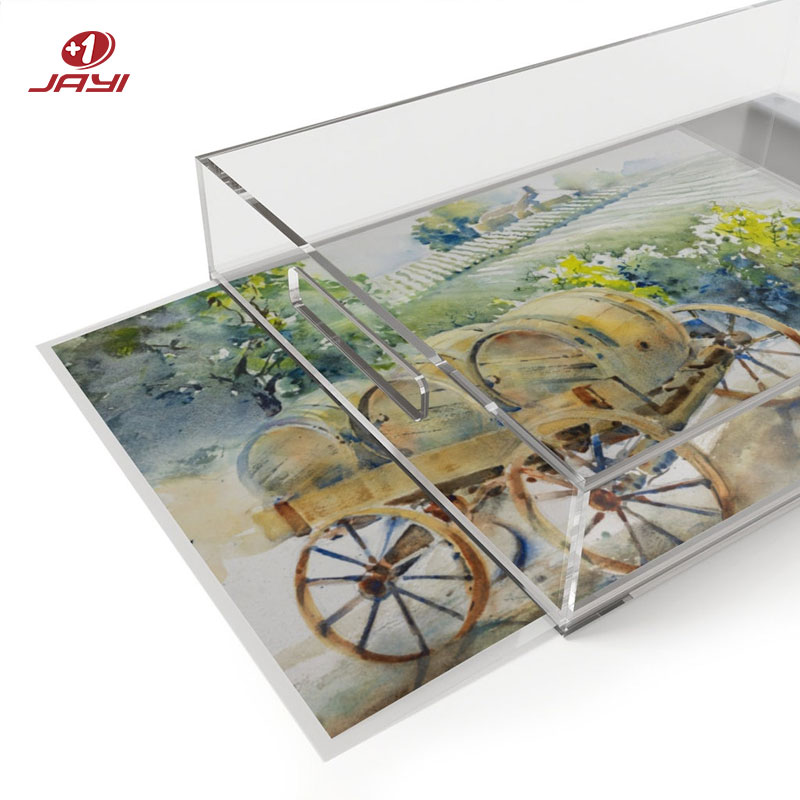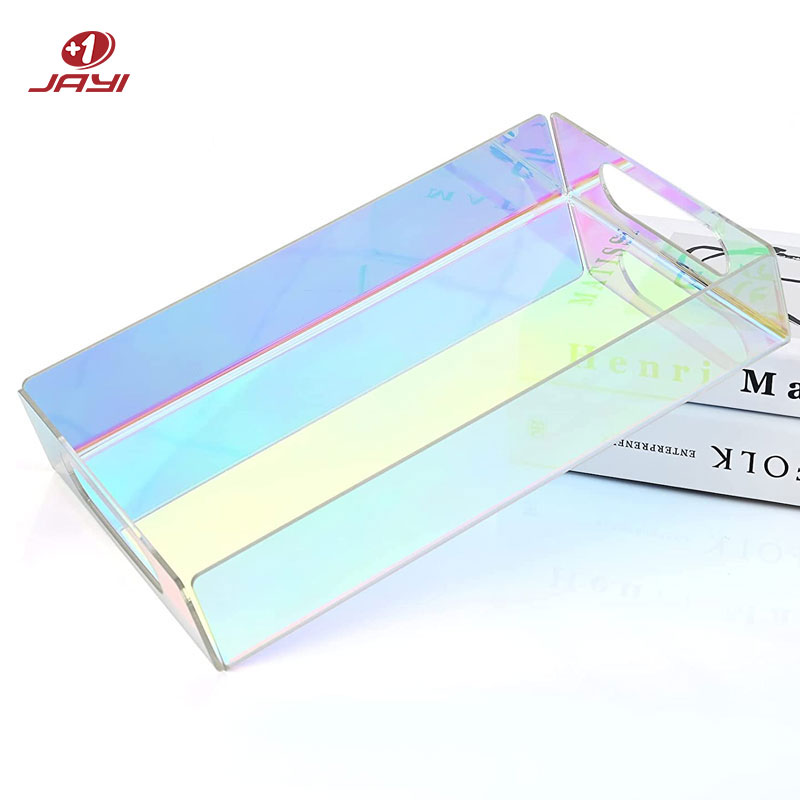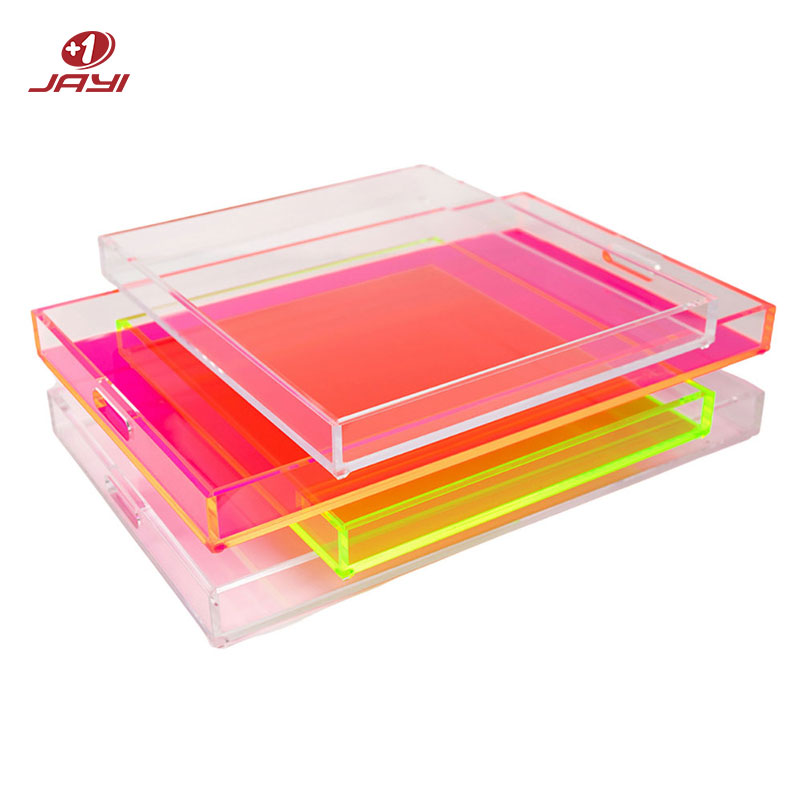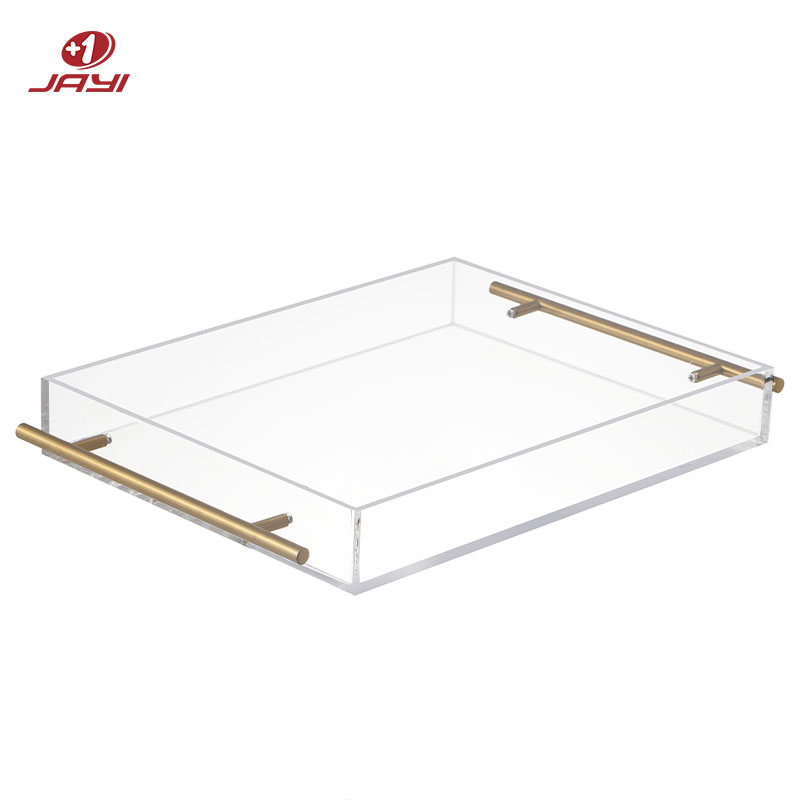Acrylic service trays, as a common cargo handling and display tool, play an important role in various industries. However, different industries and enterprises have different needs for trays, and standardized trays often cannot fully meet specific needs. This triggered the need for custom acrylic service trays.
In today's competitive market environment, enterprises are paying more and more attention to the importance of customized acrylic service trays. By customizing trays, enterprises can design and manufacture trays according to the characteristics and needs of their products to improve the display effect, convenience, and brand image of products. However, the cost of customizing acrylic service trays is also a factor that companies must consider carefully in their decision making process.
This article will focus on the cost factors of customizing acrylic service trays and help companies better understand and evaluate the cost impact in the customization process. Through a deep understanding of cost factors, enterprises can make informed decisions to meet customized requirements while controlling costs and achieving the best economic benefits. Next, we discuss the cost factors for customizing acrylic service trays in detail.
Material Cost
A) Cost of Acrylic Sheet
Acrylic sheet is one of the main materials to make acrylic trays. Different types and quality grades of acrylic sheet will have an impact on the cost.
Types and Quality Grades of Acrylic Sheet
The acrylic tray can usually be divided into ordinary acrylic tray and high-quality acrylic tray. Ordinary acrylic tray is usually used for general applications, while high-quality acrylic tray has higher transparency, wear resistance, and weather resistance, suitable for high-end products and display occasions. The quality levels may also vary according to the manufacturing process and quality control standards of the manufacturer.
Different Types and Quality Grades of Acrylic Sheet Price Differences
Different types and quality grades of acrylic sheet prices will be different. High-quality acrylic sheet is usually more expensive because of its manufacturing process and higher quality of materials. In addition, special functions of acrylic sheets, such as UV resistance, antistatic, etc., may also lead to differences in price.
B) Cost of Auxiliary Materials
In addition to acrylic sheets, making acrylic trays also needs to use some auxiliary materials, such as glue, fixing pieces, etc.
List and Explain Supporting Materials That May Be Used
Glue: Glue used to glue acrylic sheets, different types and brands of glue may vary in cost and performance.
Fixings: Fixings such as screws and nuts are used to connect different parts of the trays, the cost of which may vary depending on the material, size, and quantity.
Impact of Auxiliary Materials on Cost
Although auxiliary materials account for a small proportion of the overall cost, they have an important impact on the quality and durability of acrylic trays. The choice of high-quality auxiliary materials may increase the cost, but it can provide better performance and service life, reducing the frequency of repair and replacement. Therefore, the balance between cost and quality should be comprehensively considered when selecting auxiliary materials.
With a detailed understanding of the cost of materials, enterprises can better control and estimate the cost of customized acrylic trays, so as to make informed decisions. Next, we will continue to explore the production process cost.
Production Process Cost
A) Cutting, Engraving, and Drilling Costs
Common Production Process of Acrylic Tray
Common production processes for making acrylic trays include cutting, carving, and drilling. Cutting is to cut the acrylic sheet in accordance with the required size and shape. Engraving is the use of laser or mechanical tools on acrylic sheets for design or text engraving. Drilling is used to drill holes in the acrylic sheet to facilitate the installation of fixtures.
Impact of Different Processes on Cost
Different production processes will have an impact on the cost. For example, laser cutting may be more accurate and efficient than traditional mechanical cutting, but laser equipment and maintenance costs are higher. Carving complex patterns may require more man-hours and sophisticated equipment, thus increasing the cost. The number and size of boreholes also have an impact on the cost, as each borehole requires additional man-hours and tools.
B) Bending and Joining Costs
Process for Bending and Joining Acrylic
Bending is the bending of an acrylic sheet into a desired shape, usually using a hot or cold bending process. Bonding is the bonding of acrylic sheets of different parts together, and the commonly used methods include solvent bonding and ultraviolet bonding.
The Impact of These Processes on Cost
The bending and joining processes have a certain impact on the cost. The hot bending process may require special equipment and process control and is therefore costly. The cold bending process is relatively simple and low cost, but it may lead to deformation of the acrylic sheet in some cases. In the bonding process, solvent bonding is usually low cost but requires longer curing time. Ultraviolet bonding is fast, but the equipment cost is high.
Understanding the production process cost helps enterprises to better evaluate the cost and production efficiency of customized acrylic trays. In the next step, we will discuss the impact of other factors on the cost, including the complexity of the design and manufacturing requirements.
If you are in business, you may like
Design Requirements Cost
A) Custom Design Cost
Impact of Custom Design on Cost
Custom design is the process of designing trays according to specific needs and requirements. Custom design can meet the specific needs of product display, transportation, and storage, but it also has an impact on cost. Custom design usually requires more design time and resources, including human and design software, etc.
Cost Difference Between Complex Design and Simple Design
Complex designs increase the cost relative to simple designs. Complex designs may involve unique shapes, structures, or patterns that require more design effort and technical support. In addition, complex designs may also require more manufacturing steps and special processing techniques, further increasing costs.
B) Size and Shape Cost
Impact of Size and Shape on Cost
The size and shape of the trays have an impact on the cost. Larger sizes of trays may require more materials and manufacturing processes, thus increasing the cost. Non-traditional shaped trays may require special cutting, bending, and joining processes and also increase costs.
Cost Considerations for Large Trays and Non-Traditional Shaped Trays
When considering large-size trays, the additional materials and manufacturing costs required need to be evaluated, along with the complexity of transportation and storage. For non-traditional shaped trays, special cutting, bending, and joining processes need to be considered, as well as possible increased design and manufacturing time.
Considering the cost factors of design requirements, enterprises can reasonably control the cost while meeting the customization requirements. In the next section, we continue to discuss other factors that affect cost, including production lot sizes and additional service considerations.
Color and Decoration Cost
A) The Cost Difference Between Transparent Acrylic and Colored Acrylic
There may be a difference in cost between clear acrylic and colored acrylic. In general, the raw material cost of transparent acrylic is low because it does not require additional pigments or dyes. However, colored acrylic requires color to be added in the manufacturing process, and thus may increase production costs.
B) Cost of Printing Patterns and Logo
Cost of Printing Patterns and Logos on Acrylic Tray
The cost of printing patterns and signs on acrylic trays will vary based on a number of factors. These factors include the complexity of the pattern, the choice of printing technique, and the number of prints.
Provide Cost Comparison of Different Printing Methods and Effects
a. Printing Method:
- Screen Printing: Screen printing is a common printing technique suitable for simple patterns and high-volume production. It has a relatively low cost.
-
Digital Printing: Digital printing is suitable for complex patterns and small-batch production. It is relatively expensive but can achieve higher pattern resolution and detail.
b. Printing Effect:
-
Monochrome printing: Monochrome printing is usually the most affordable option because it requires only one color of ink or pigment.
-
Multi-color Printing: Multi-color printing involves the use of multiple colors of ink or color materials, so the cost is higher. The more colors, the higher the cost.
It should be noted that special effects such as foil hot stamping, texture printing, etc. usually increase the printing cost.
Considering the cost of color and decoration, businesses can weigh requirements and budgets to choose the most suitable option. In the next section, we will continue to discuss other factors that affect the cost, including production time and additional services.
Welcome to our custom acrylic trays factory! We offer industry-leading customization services, so whether you need to customize your personal items or want to create a unique product for a corporate event, we can meet your needs. From design to production, our professional team will strive to create exclusive acrylic trays for you, so that you can feel a unique experience in every use.
Other Cost Factors
A) Packing and shipping cost
The production process and technical details of acrylic trays are the key to ensuring the quality of the final product. Here's the relevant information:
Impact of Packaging and Transportation on Cost
Packaging and transportation are the cost factors that cannot be ignored in the production process of acrylic trays. Proper packaging protects trays from damage, while transportation costs involve the expense of delivering trays from the production site to the destination.
Cost Differences of Different Packing and Transportation Modes
Different packing and transportation methods will have different costs. For example, using standard packaging materials such as cartons is relatively inexpensive, but additional padding may be required to secure the trays. The use of custom packaging materials, such as custom cartons or foam packaging, can provide higher protection at the cost of a corresponding increase. Costs are also affected by the mode of transport, such as by road, air, or sea, each with different charges and lead times.
B) Impact of Customized Quantity and Delivery Time on Cost
The customization quantity and lead time have an important impact on the cost. A larger number of customizations usually reduces the unit cost because the fixed costs in the production process can be spread over a larger number of products. Shorter lead time requirements may require overtime or accelerated production, potentially increasing labor and equipment costs.
Cost Considerations for Large and Urgent Orders
Cost considerations for large-volume orders include discounts on raw material procurement, increased production efficiency, and higher transportation benefits. However, large-volume orders may require longer production times and more complex logistics management. For urgent orders, there may be increased labor costs and equipment utilization due to the need for overtime and accelerated production, while also requiring faster transportation modes, which may lead to higher expenses.
Considering the above factors, enterprises can develop the most economical and in line with the demand of the production and delivery plan.
Summary
When customizing acrylic trays, it is very important to consider all cost factors. The following is a summary of the importance and impact of each cost factor:
-
Custom Design Cost: Custom design can meet specific requirements, but may increase design time and resource cost. The need for custom design needs to be balanced against the cost.
-
Size and Shape Costs: Large-size trays and non-traditional shape trays may require additional materials and manufacturing processes, thus increasing costs. The relationship between special needs and costs needs to be considered.
-
Color and Decoration Costs: The choice of clear acrylic or colored acrylic has an impact on the cost. The complexity of printed patterns and signs, the way they are printed, and the effect they have can also lead to differences in costs.
-
Packaging and Transportation Costs: Proper packaging and selection of appropriate transportation modes can protect trays and control costs. The balance between safety and the cost of packaging and transportation needs to be weighed.
-
Impact of Customized Quantities and Lead Times: Large volume orders can reduce unit costs, but may require longer production times and logistics management. Rush orders can lead to overtime and accelerated production, increasing labor and transportation costs.
In summary, customers need to consider the above cost factors when customizing acrylic trays. Depending on the specific needs and budget, various factors are weighed to arrive at the most economical and demand-compliant solution. At the same time, work closely with suppliers to ensure adequate communication and understanding in order to maximize cost control during design and production.
Post time: Sep-27-2023




